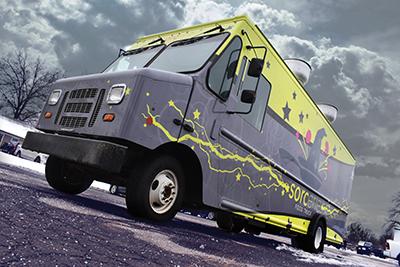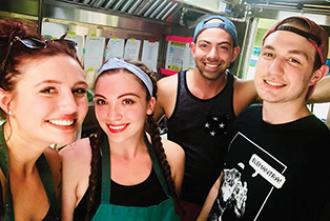Relevant Risk:


In 2017, Whole Foods Co-op in Erie, Pennsylvania, was facing a serious challenge. On the heels of discontinuing the monthly 15 percent member-owner discount, co-op transactions were lagging, and fewer people than ever were joining. By the summer of that year, the co-op was down 10 percent in transactions and 8 percent in monthly sales compared to the previous year.
As a new general manager (GM), I was tasked with finding a solution to this concerning set of problems. There were several options that the board of directors had previously discussed, including a new location, some type of complementary discount system, or a food truck.
At the same time that our co-op was undergoing great change, so was our larger community. For many years we experienced the pains of every Rust Belt city, including rapid job loss and population decline. A recent investment in tech start-ups in the downtown reinvigorated the sense that our city would rebound.
The co-op, a crucial part of the city for almost 40 years, was the perfect complement to a city-uplifting campaign—but we were located miles away from the heart of the action. With this in mind, the GM and board started seriously exploring how a food truck could connect us to the downtown and help us better serve our member-owners in other areas of the city.
Purpose
We went into the planning phase with a few Ends in mind: providing healthy, organic and locally sourced options at community events; increasing our reach; piloting unique flavor combinations that inspire creativity and exploration; and most importantly, doing all these things with love for food and love for the Erie community. We would measure the venture’s success more as a marketing endeavor than as a revenue boost, meaning that we would be evaluating its impact through the growth in our member-ownership and transactions, while anticipating a breakeven operation.
Branding and design
We knew we were in a unique position with our name being so often associated with the Whole Foods Market brand. We had a few important questions to answer at the beginning of the design process: Are the name associations strong enough to prevent us from standing out on our own? Is our current branding in line with the pilot items we will be carrying on the truck, and how will the association impact our café?
We finally chose to have a separate brand for the truck. We worked closely with our marketing department and our staff-composed food truck committee to find a name that would speak to our roots and our vision and thus arrived at SorcERIE—an Erie-born truck magically transforming organic and locally sourced ingredients into delicious food.
Hiring and staffing
We envisioned that the truck would be a food incubator and an opportunity for someone with the desire but not the capital to run a truck of their own. We received over 50 applications and narrowed them by depth of experience and enthusiasm for the project. Our final candidates went through several rounds of interviews and a group interview with our food truck committee, composed of almost 20 people on staff and the board.
Maintaining staffing on the truck was one of our biggest challenges. In quick succession, our first food truck manager moved to another city and our second received a grant to open his own business. Our third and current food truck manager, Jessee Treiber, officially took over in July and has brought creativity and thoughtful planning to growing and evolving the SorcERIE brand.
Of her time on the truck, Treiber says, “The community of food trucks in Erie is one that has genuinely and continuously proved to amaze and motivate me. I was thrown into the world of food trucks not completely knowing all of the ins and outs of the business dynamic. There is a lot that goes into what seems like a simple lunch event, between different licensing and vendor agreements, food and vehicle preparation, truck maintenance, etc. It takes a lot of behind-the-scenes work that most people aren’t aware of to make these things happen.”
The truck
There are a lot of considerations that go into the truck purchase: menu, size, state and city regulations, climate, and more.
We designed our truck to be able to have an adaptable menu—we opted for a flat top stove, two burners, and a conveyor oven. We have a full sandwich line and a large refrigeration unit. There were additional costs compared to most operating food trucks, which often intentionally keep a simple menu to reduce operating space. These amenities and the truck’s full external marketing wrap cost around $90,000.
An additional consideration included taking payments. Since the truck is mobile, we were unable to effectively keep our current POS system; we opted to use Square, since it has functionality pre-designed for mobile and small businesses. This costs an extra 2% on top of other bank fees, so we had to build that cost into our budget.
The results
The truck was staffed and ready for operation in May 2018. We started with a staff party/soft launch in which we treated our entire staff to a meal and a branded t-shirt in exchange for honest feedback. The most important takeaway from that event was to ensure faster ticket times, which we were able to accomplish before serving the public.
In April and May, the truck got a lot of local press, between news articles and interviews on radio and TV stations. We saw a dramatic increase in new member-owner enrollment in the weeks leading up to the launch. We continued to exceed our goals for new member-owners by 20 percent each month until July.
We recorded our highest sales volume for June in the store’s history. By late fall, our total sales were up 3 percent over the previous year, with transactions up 7 percent.
Auxiliary effects and considerations
Initially, we were planning to operate year-round, but have found that is not feasible due to the current truck culture (people do not expect and therefore do not seek out trucks in our area in the winter) and our vents causing snow buildup in the truck cab. In order to maintain staffing for our manager and head chef year-round, we had to find creative ways to book the truck on days without snow, and otherwise absorb them into our café.
We also found controlling labor to be very difficult. Weather could dramatically alter the volume of an event. And training staff could put our labor costs over 50 percent.
Finally, when you’re operating a food truck, you are in the human resources business, food service business, event planning business, and trucking industry. In order to be effective, we needed to ensure our team had the resources to solve complex problems for which we didn’t have historical precedence.
This experience has been extreme for testing our ability to launch complex initiatives in relatively short time frames. It gave us a model for running a satellite location and gave us insight into the needs of our larger community. •







